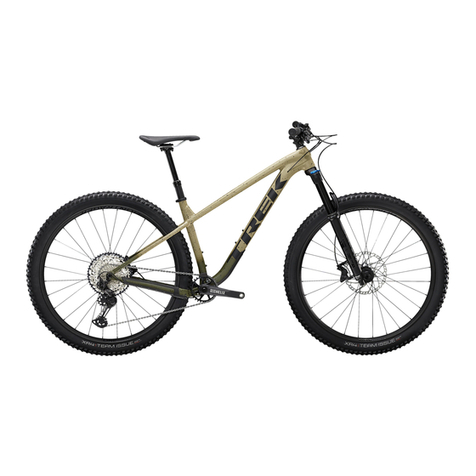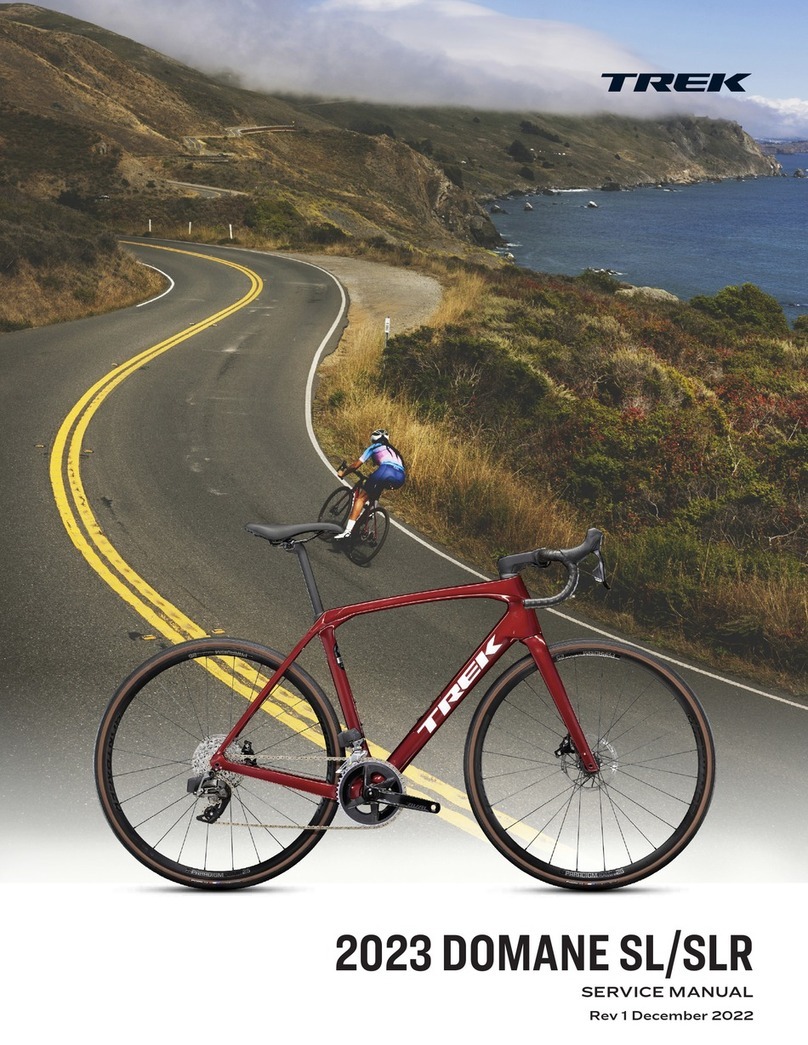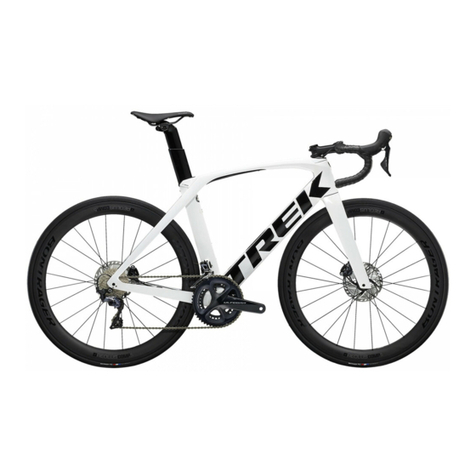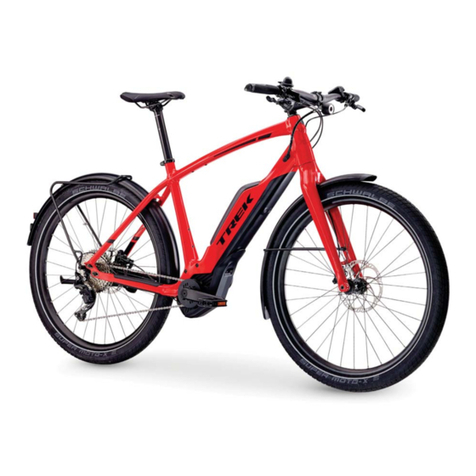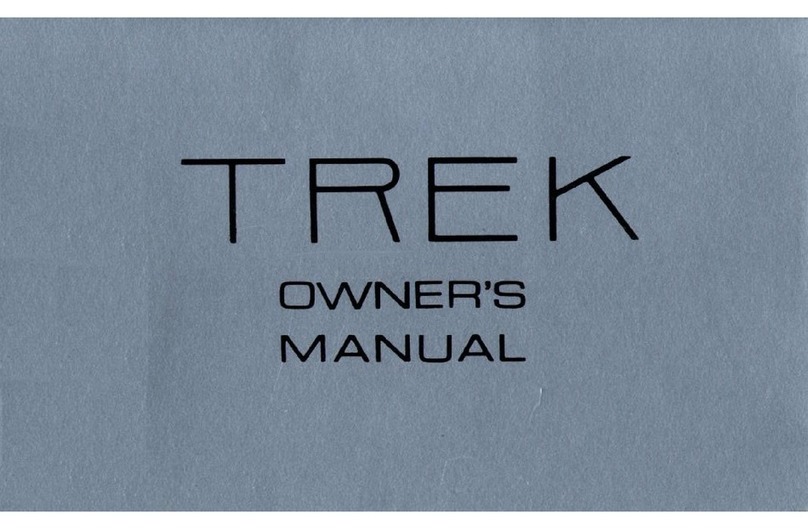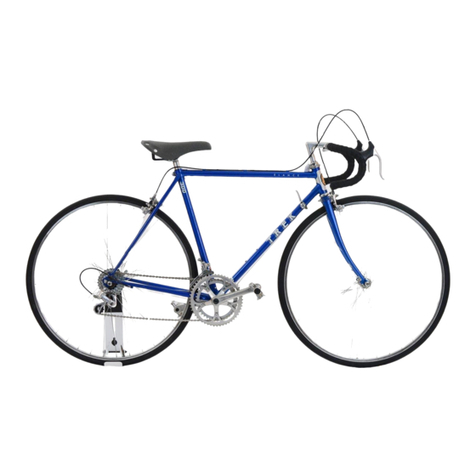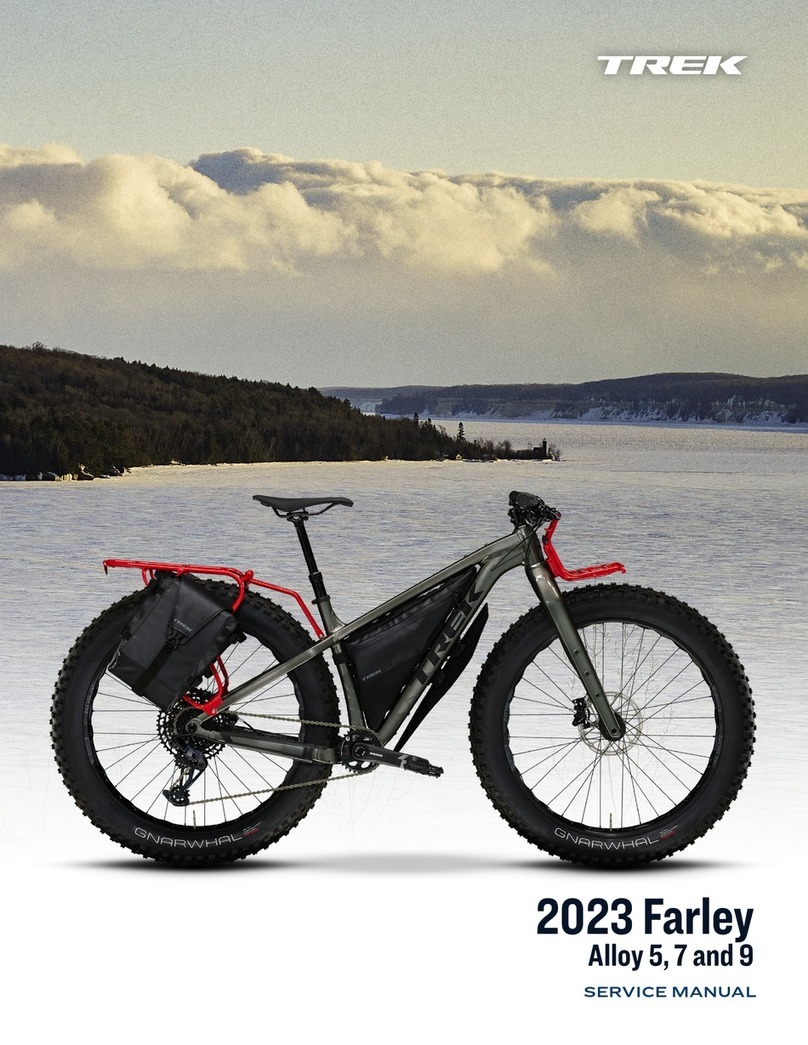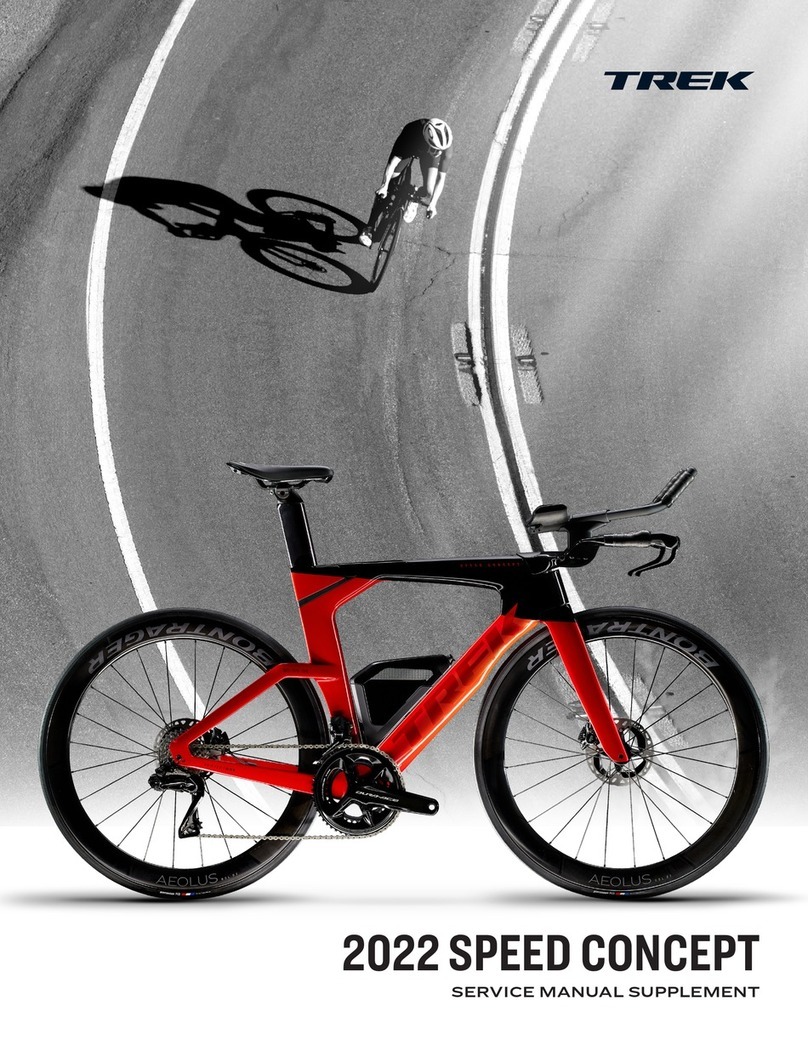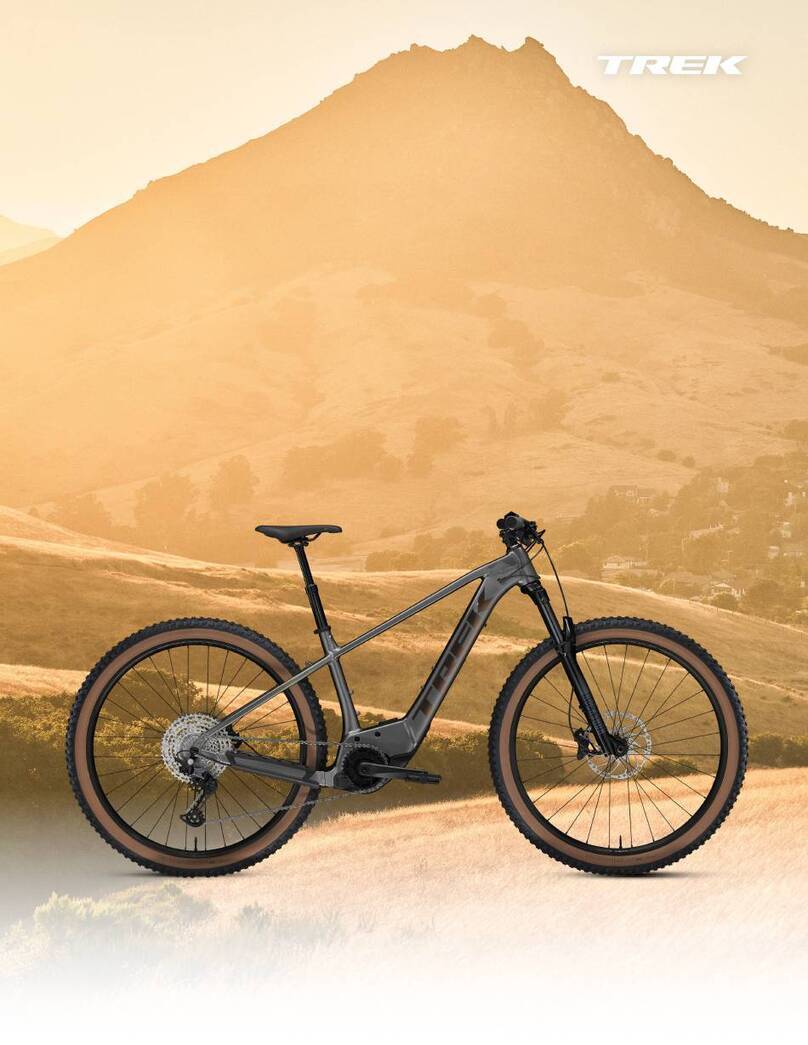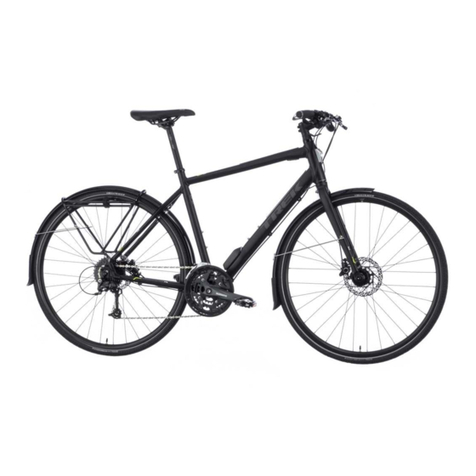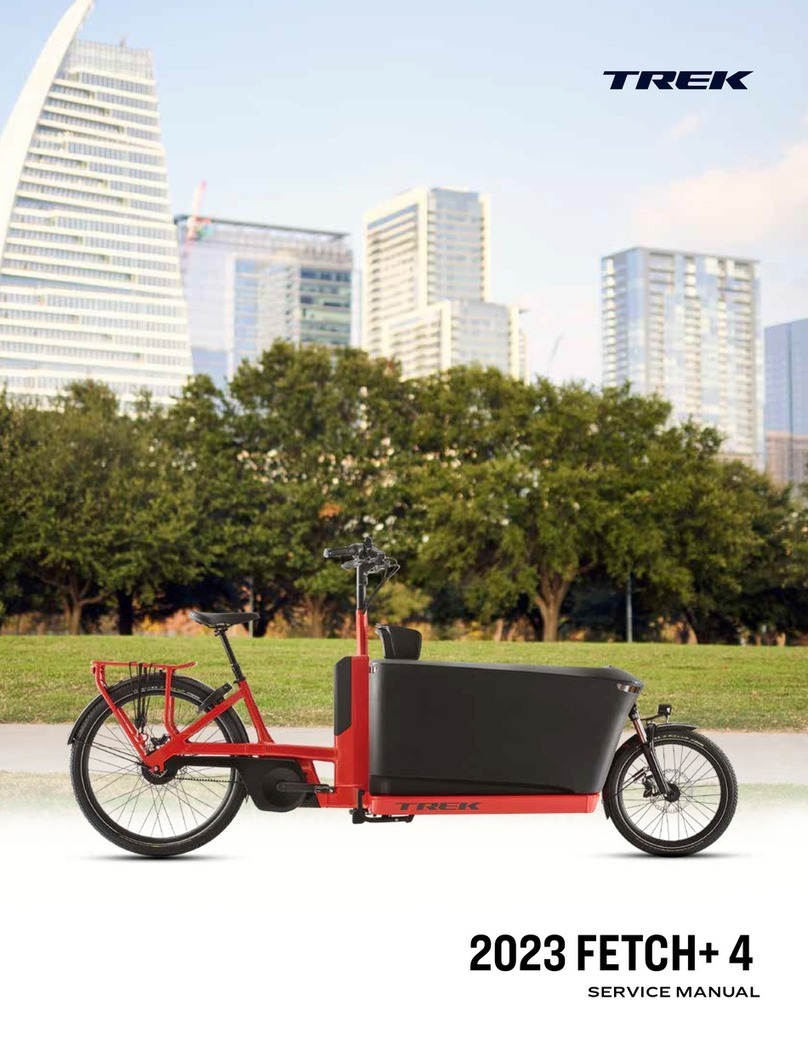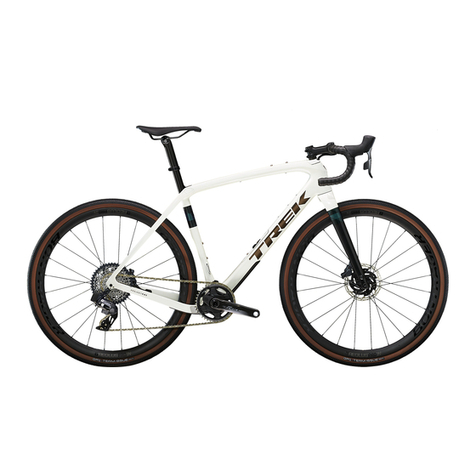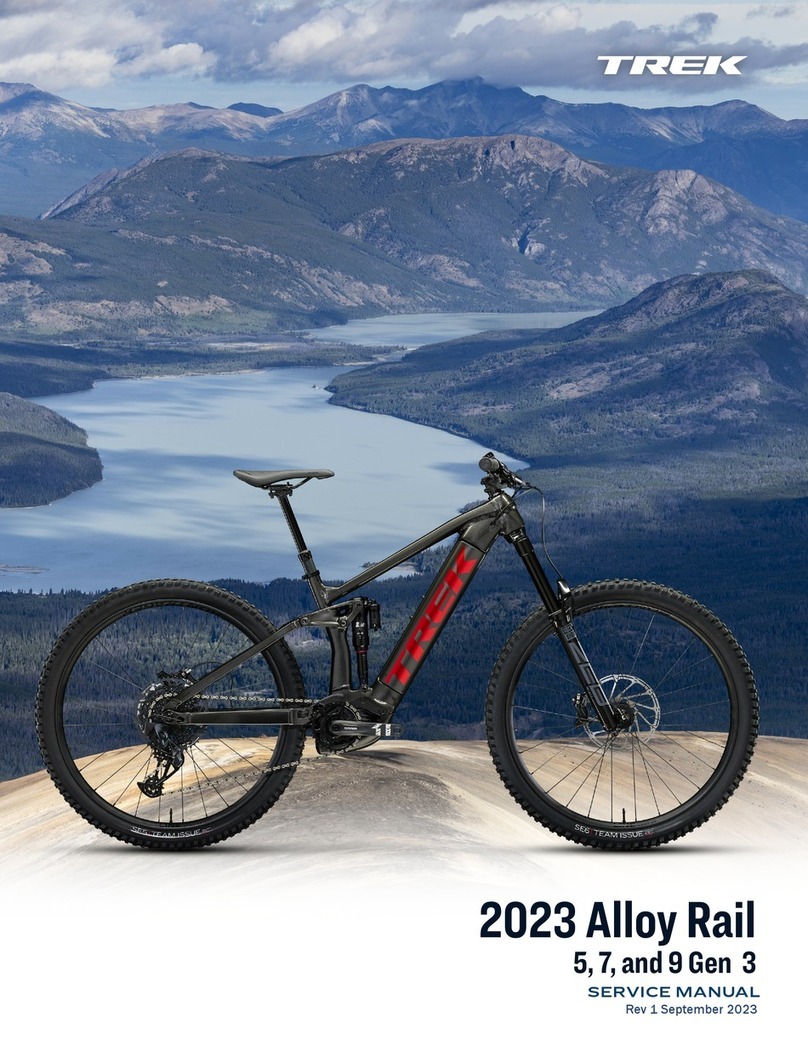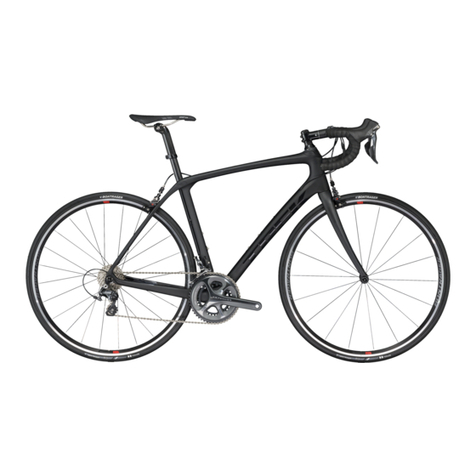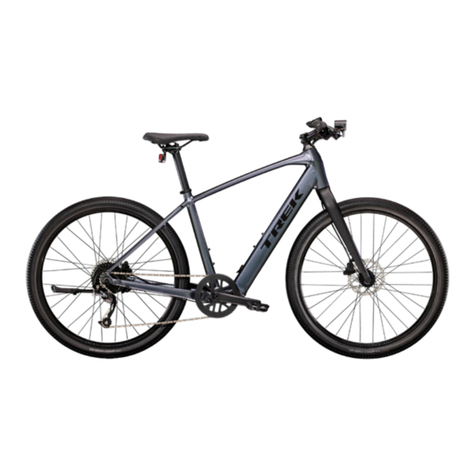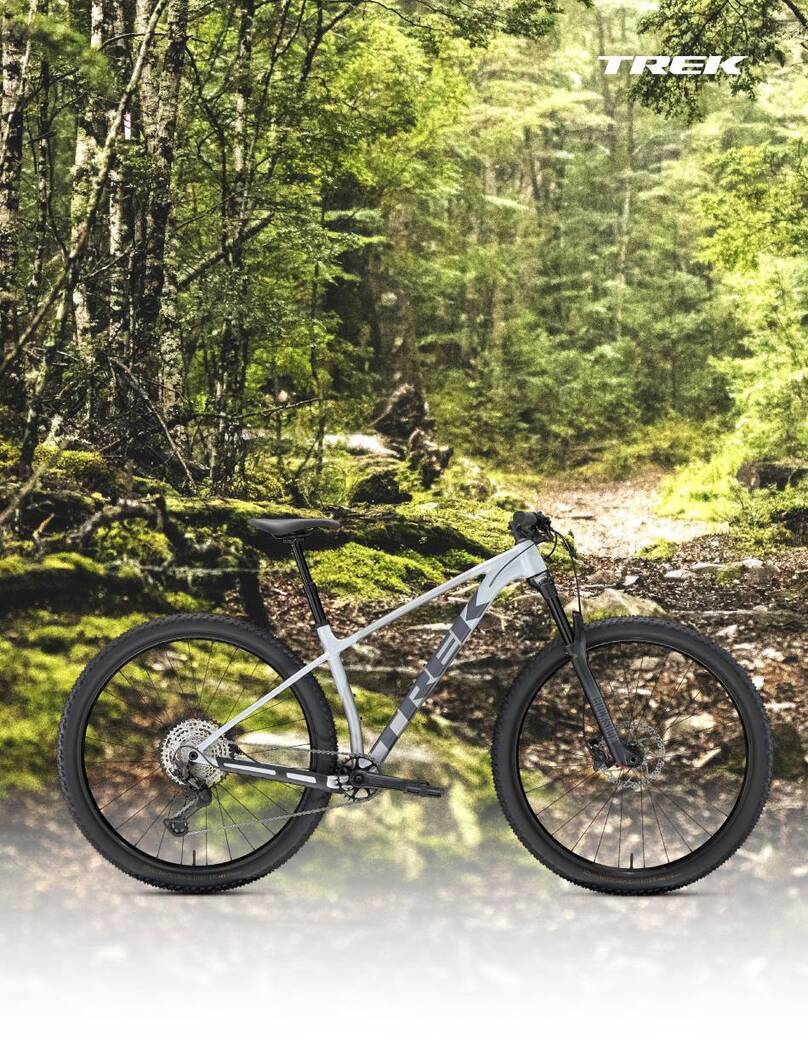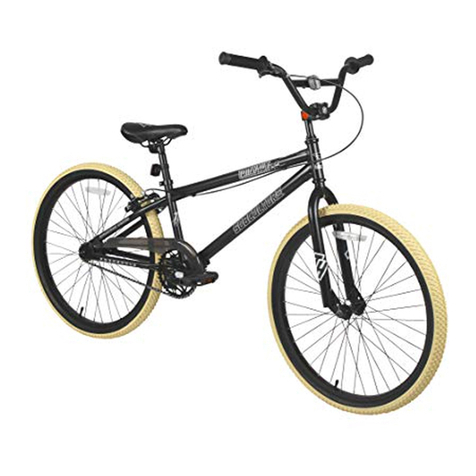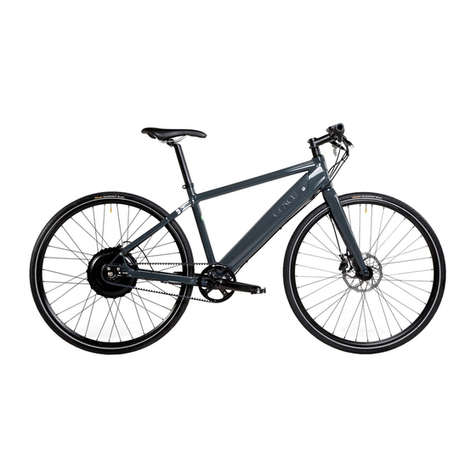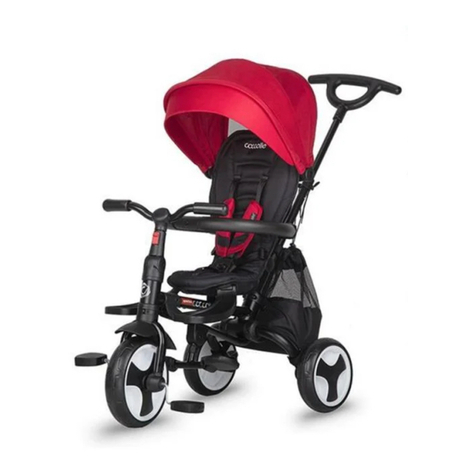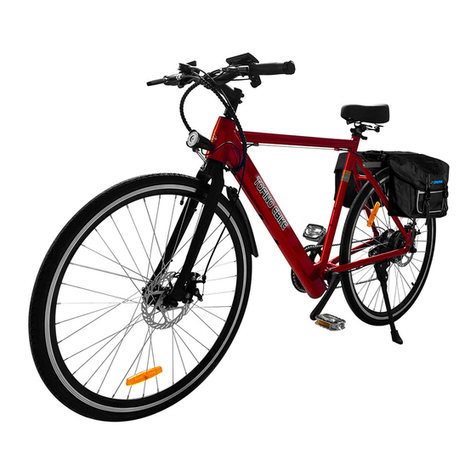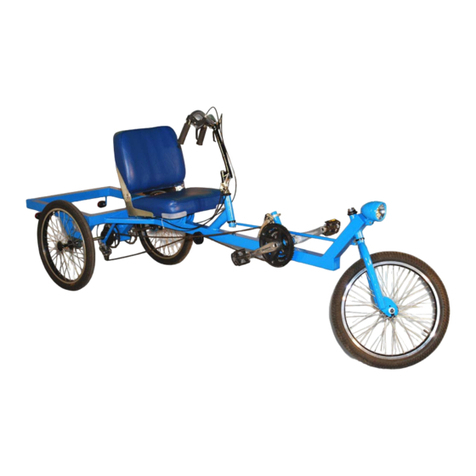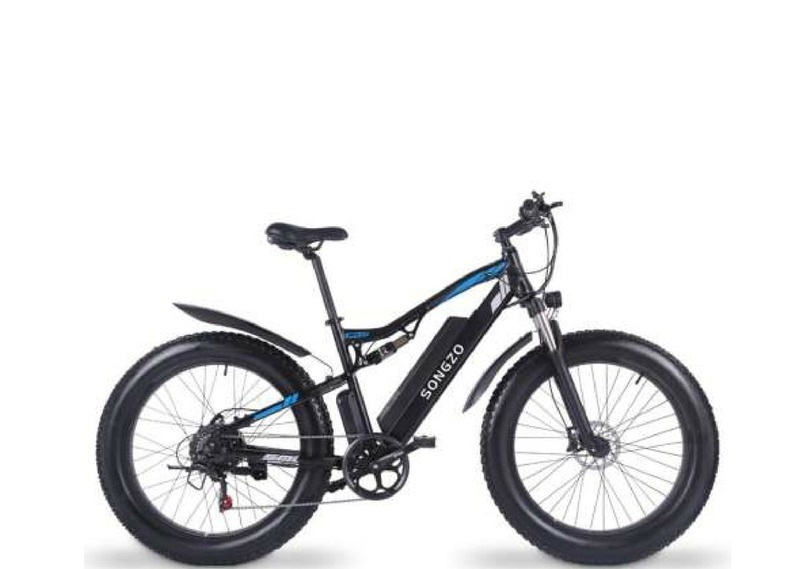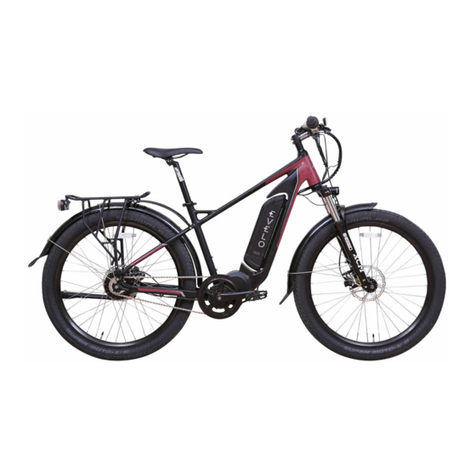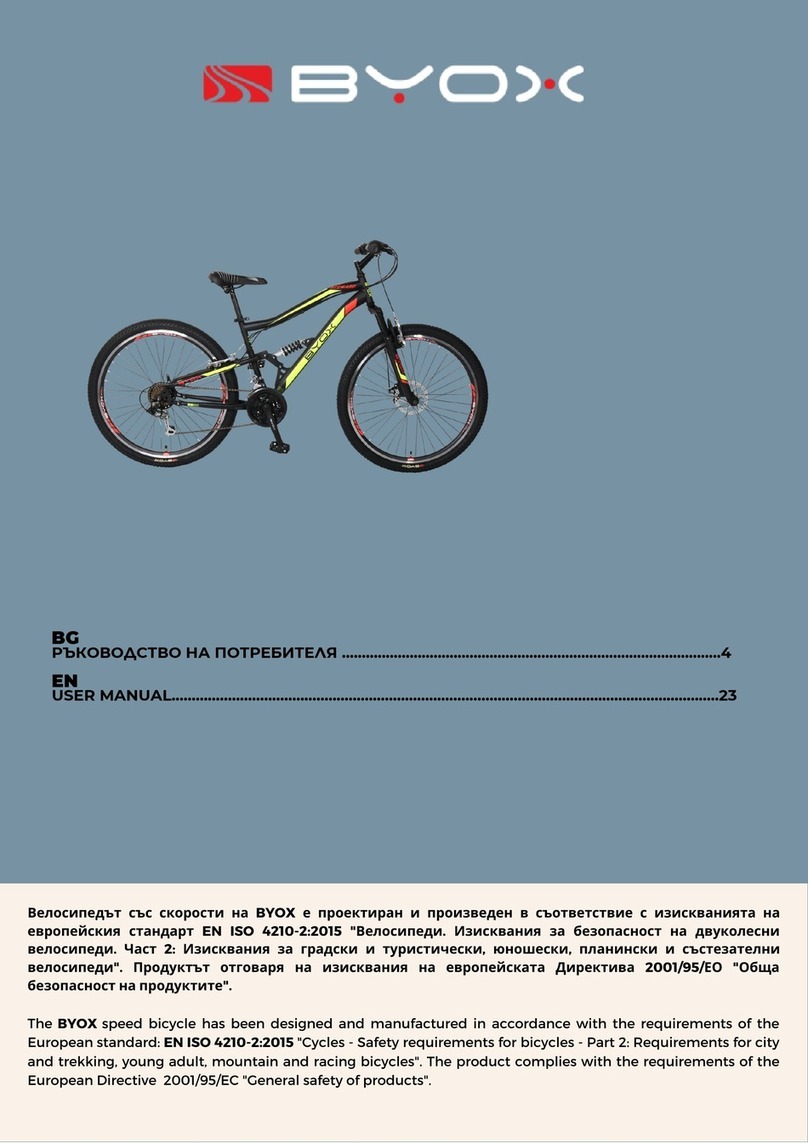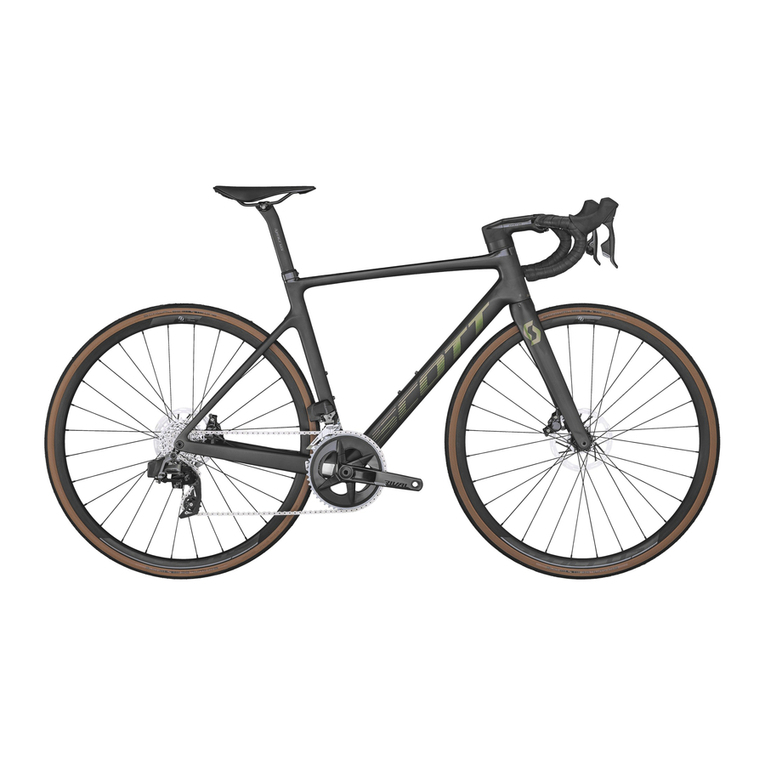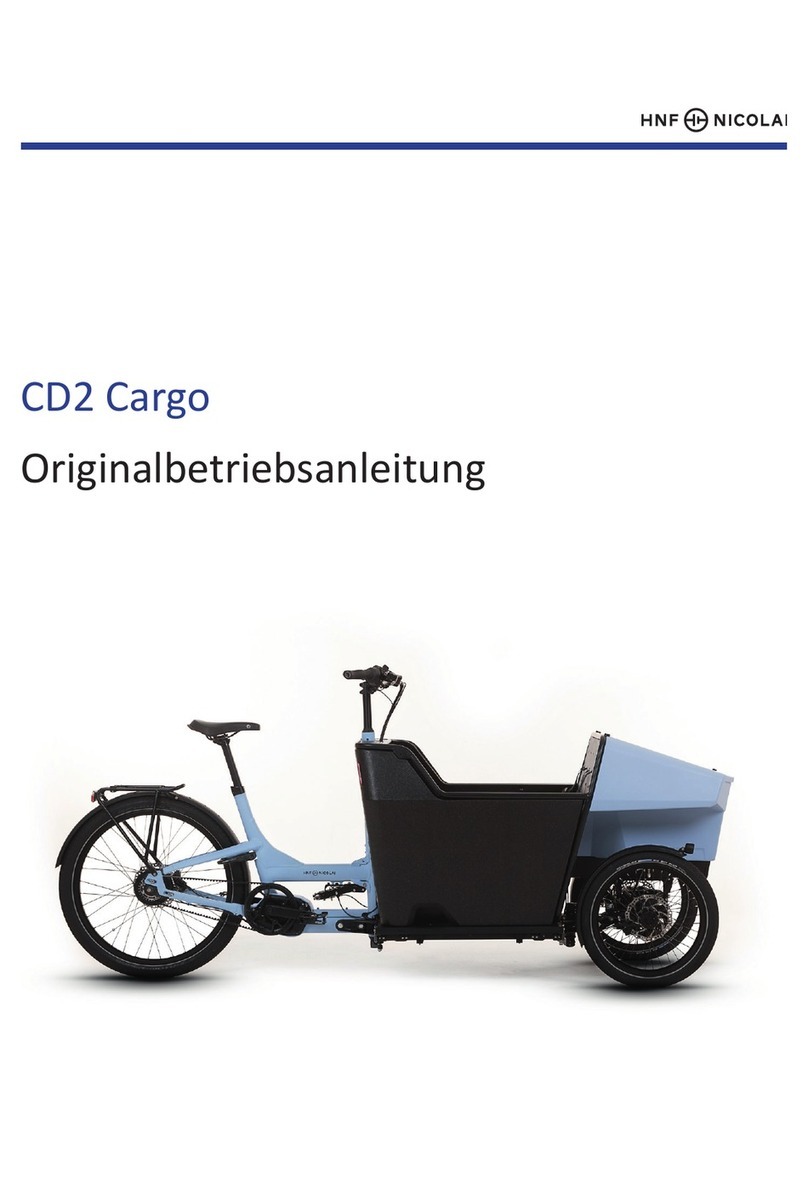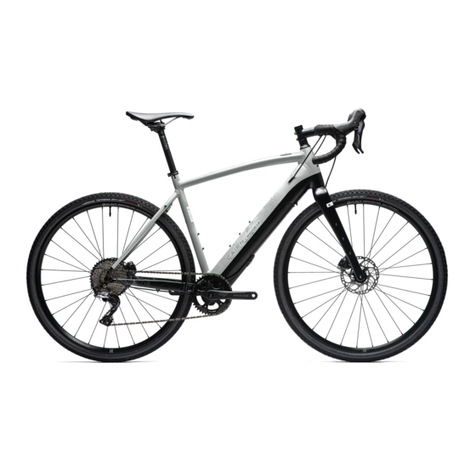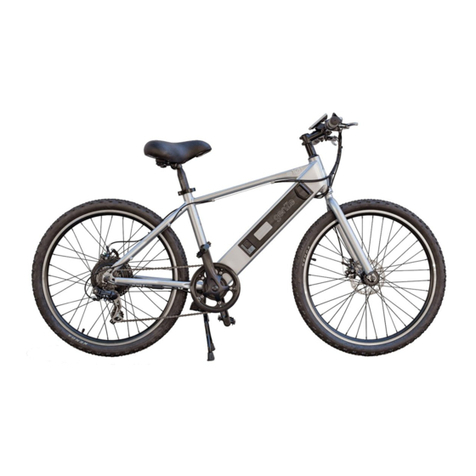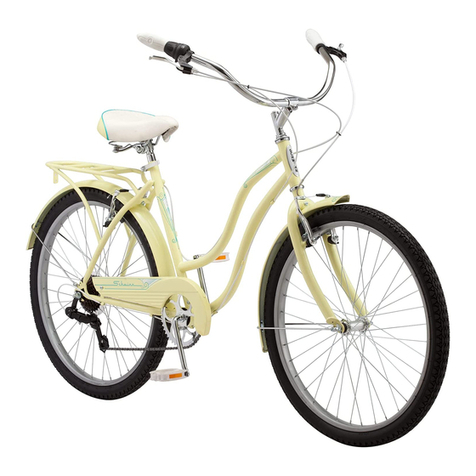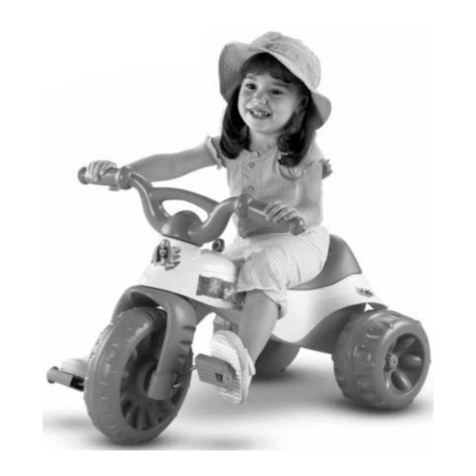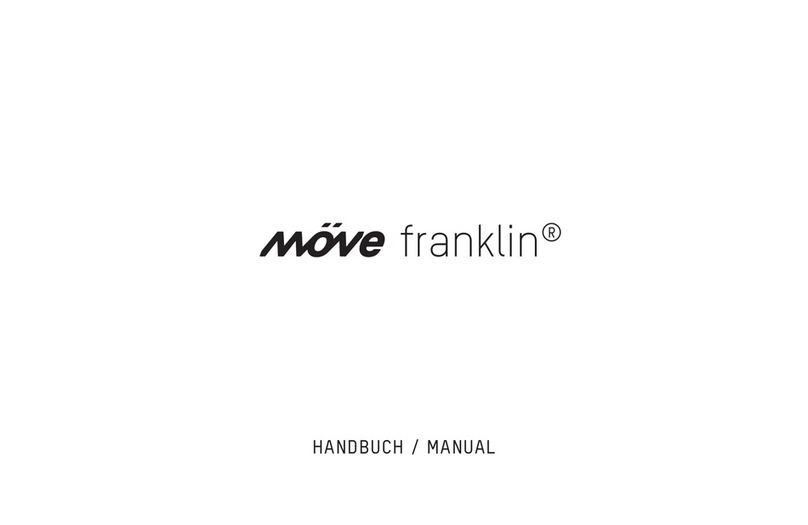Chapter 1: Guide to Safe On-and-Off Road Operation11
We make bicycles so that the left brake-lever
controls the front-wheel brake. To change your
bicycle so that the right brake-lever controls the
front-wheel brake, see Chapter 3.
Many models of modern brakes are very powerful;
they are made to stop a bicycle in wet or muddy
conditions. If you think your brakes are too
powerful, transport your bicycle to your dealer for
adjustment or replacement of the brake system.
Change Gears Correctly
You can change to the gear combination that
is most comfortable for the conditions, a gear
that lets you to pedal at a constant rate. Gear
change systems are of two types: derailleur
(external) and internal.
To change gears with a derailleur
The left shift-lever controls the front derailleur and
the right shift-lever controls the rear derailleur.
Use only one shift-lever at a time. Change gears
only when the pedals and chain move forward.
When you change gears, decrease the force on
the pedals to change gears quickly and smoothly,
to decrease chain and gear wear, and to prevent
bent chains, derailleurs, or chainrings. Do not
change gears when you ride over bumps; the
chain could miss a gear or fall off.
With modern, indexed gear-change systems, a
movement of the shift-lever from one position
to the other position (or movement of the shift-
lever to the “shift” position) will promptly move
the chain to a different gear.
Bicycles that have STI road shift-levers and
three chainrings can change front gears better
if you “hold” the lever for a moment before
you release the left shift-lever. This is most
important when you change gears from the
smallest chainring to the middle chainring.
To change gears with internal gears
To change gears, move the pedals to the rear
or do not move them. If you must change gears
while you pedal, decrease your pressure on the
pedals. Too much tension on the chain prevents
the correct operation of the gear change
mechanism and could damage the mechanism.
Use Pedal Systems Carefully
If your feet are secured to the pedals, the
connection can allow you to pedal more
efficiently, apply greater power to the pedals,
or increase your control of the bicycle. Some
bicycles are equipped with one of these systems:
• Toe-clips and straps attach your feet to the
pedals with a strap with a locator that wraps
up and in front of your toes.
• Clipless pedals use a spring-loaded mechanism
to engage a cleat, a small plate attached to the
bottom of a special cycling shoe.
If you choose to ride with one of these systems,
practice entry and exit from the pedal before
you ride. Keep the pedals and your shoes
clean and free of debris that could interfere
with the pedal system. Make sure any release
mechanism operates correctly, and adjust it for
your riding.
If you are not familiar with the pedals or the
correct procedures, read the information on the
Owner’s Manual CD or consult your dealer.
WARNING: A pedal system that
operates incorrectly could cause your
feet to become trapped or allow your
feet to release from the pedal
unexpectedly, causing you to lose
control. Make sure you are familiar
with the pedal system before riding,
and that the pedal system operates
correctly.




















